-
 Bitcoin
Bitcoin $85,034.7515
0.87% -
 Ethereum
Ethereum $1,878.5720
-0.11% -
 Tether USDt
Tether USDt $0.9997
-0.02% -
 XRP
XRP $2.1173
-2.71% -
 BNB
BNB $603.7936
-2.09% -
 Solana
Solana $125.8960
-2.16% -
 USDC
USDC $1.0000
0.00% -
 Dogecoin
Dogecoin $0.1717
-1.15% -
 Cardano
Cardano $0.6803
-0.05% -
 TRON
TRON $0.2371
1.16% -
 Toncoin
Toncoin $4.0680
-1.64% -
 Chainlink
Chainlink $13.6041
-2.67% -
 UNUS SED LEO
UNUS SED LEO $9.3977
2.15% -
 Stellar
Stellar $0.2673
-2.41% -
 Avalanche
Avalanche $19.4065
-1.12% -
 Sui
Sui $2.4228
0.28% -
 Shiba Inu
Shiba Inu $0.0...01239
-4.17% -
 Hedera
Hedera $0.1682
-1.91% -
 Polkadot
Polkadot $4.1064
-3.13% -
 Litecoin
Litecoin $82.6894
-3.10% -
 MANTRA
MANTRA $6.1952
-1.48% -
 Bitcoin Cash
Bitcoin Cash $306.4058
-2.56% -
 Bitget Token
Bitget Token $4.6047
-1.08% -
 Dai
Dai $1.0000
-0.01% -
 Ethena USDe
Ethena USDe $0.9999
0.02% -
 Pi
Pi $0.6782
-5.17% -
 Hyperliquid
Hyperliquid $13.4844
-1.67% -
 Monero
Monero $215.4922
-1.00% -
 Uniswap
Uniswap $6.1086
-1.70% -
 Aptos
Aptos $5.2965
-1.83%
How to use candlestick charts to formulate cryptocurrency trading plans?
Candlestick charts are vital for crypto trading, showing price movements and patterns like hammers and engulfing signals, but should be used with other indicators for best results.
Mar 29, 2025 at 09:22 am
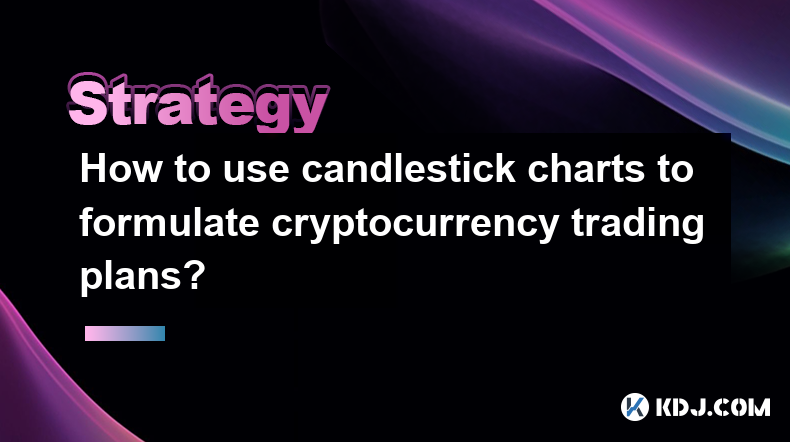
Understanding Candlestick Charts in Cryptocurrency Trading
Candlestick charts are a powerful visual tool used to represent price movements of cryptocurrencies over a specific period. Each candlestick represents the price action during that time frame (e.g., 1 hour, 4 hours, 1 day). Understanding how to interpret these charts is crucial for developing effective trading strategies. A candlestick's body shows the opening and closing prices, while the wicks (shadows) represent the high and low prices reached during that period. By analyzing the patterns formed by these candlesticks, traders can identify potential entry and exit points.
Identifying Key Candlestick Patterns
Many candlestick patterns offer insights into market sentiment and potential price direction. Bullish patterns suggest upward price movements, while bearish patterns suggest downward movements. Some common patterns include:
- Hammer: A small body with a long lower wick, suggesting a potential reversal from a downtrend.
- Inverted Hammer: A small body with a long upper wick, suggesting a potential reversal from an uptrend.
- Engulfing Pattern (Bullish): A large green candlestick engulfing a previous red candlestick, signaling a potential bullish reversal.
- Engulfing Pattern (Bearish): A large red candlestick engulfing a previous green candlestick, signaling a potential bearish reversal.
- Doji: A candlestick with almost equal opening and closing prices, indicating indecision in the market.
- Shooting Star: A long upper wick with a small body near the bottom of the candlestick, suggesting a potential bearish reversal.
Combining Candlestick Charts with Other Indicators
While candlestick patterns provide valuable information, relying solely on them can be risky. It's essential to combine candlestick analysis with other technical indicators for confirmation and to reduce the risk of false signals. Popular indicators include:
- Moving Averages (MA): These smooth out price fluctuations and help identify trends. Common types include Simple Moving Average (SMA) and Exponential Moving Average (EMA).
- Relative Strength Index (RSI): This measures the magnitude of recent price changes to evaluate overbought or oversold conditions.
- MACD (Moving Average Convergence Divergence): This identifies momentum changes by comparing two moving averages.
- Volume: Analyzing trading volume alongside candlestick patterns can help confirm the strength of price movements. High volume during a bullish candlestick pattern strengthens the bullish signal.
Formulating a Cryptocurrency Trading Plan Using Candlestick Charts
Developing a robust trading plan involves several steps:
- Define your trading goals: Determine your risk tolerance, profit targets, and investment timeframe. Are you a day trader, swing trader, or long-term investor?
- Identify your preferred cryptocurrency: Research different cryptocurrencies and choose those that align with your goals and risk tolerance.
- Choose your timeframe: Select a timeframe for your candlestick charts (e.g., 1-hour, 4-hour, daily) based on your trading style.
- Identify potential entry and exit points: Use candlestick patterns and technical indicators to identify potential entry points (buy signals) and exit points (sell signals). Consider using stop-loss orders to limit potential losses.
- Backtest your strategy: Before risking real capital, test your trading plan on historical data to assess its effectiveness.
- Risk Management: Implement strict risk management rules, such as position sizing and stop-loss orders, to protect your capital.
Understanding Support and Resistance Levels
Support and resistance levels are crucial in candlestick chart analysis. Support represents a price level where buying pressure is expected to outweigh selling pressure, preventing further price declines. Resistance represents a price level where selling pressure is expected to outweigh buying pressure, preventing further price increases. Breakouts above resistance or below support can signal significant price movements. Identifying these levels on your charts helps you anticipate potential turning points.
Advanced Candlestick Chart Techniques
More advanced techniques involve combining multiple candlestick patterns to identify stronger signals. For example, a bullish engulfing pattern followed by a hammer candlestick can reinforce a bullish reversal signal. Understanding candlestick formations within larger trend contexts is also crucial. A bullish pattern within a long-term downtrend might not signal a significant reversal.
The Importance of Risk Management
No trading strategy is foolproof. Even with meticulous candlestick chart analysis, losses are inevitable. Therefore, effective risk management is paramount. This includes setting stop-loss orders to limit potential losses, diversifying your portfolio, and never investing more than you can afford to lose. Always remember that the cryptocurrency market is highly volatile.
Frequently Asked Questions
Q: Are candlestick charts suitable for all cryptocurrency trading styles?
A: While candlestick charts are valuable for various trading styles, their effectiveness depends on the timeframe. Day traders might use shorter-term charts (e.g., 1-hour, 5-minute), while long-term investors might focus on daily or weekly charts.
Q: Can I rely solely on candlestick patterns for trading decisions?
A: No. Candlestick patterns should be used in conjunction with other technical indicators and fundamental analysis for more accurate trading decisions. Relying solely on candlestick patterns can lead to false signals and losses.
Q: How do I identify reliable support and resistance levels?
A: Reliable support and resistance levels are often identified by observing previous price highs and lows. Multiple touches at a specific price level can strengthen its significance as support or resistance.
Q: What is the best timeframe for candlestick charts in cryptocurrency trading?
A: The optimal timeframe depends on your trading style and risk tolerance. Day traders might prefer shorter timeframes, while swing traders and long-term investors might prefer longer timeframes. Experimentation is key to finding what works best for you.
Q: How can I improve my candlestick chart interpretation skills?
A: Practice is crucial. Start by analyzing historical charts, identifying patterns, and comparing your analysis with actual price movements. Consider using a demo trading account to practice your strategies without risking real funds. Continuously learning and refining your approach is essential for success.
Disclaimer:info@kdj.com
The information provided is not trading advice. kdj.com does not assume any responsibility for any investments made based on the information provided in this article. Cryptocurrencies are highly volatile and it is highly recommended that you invest with caution after thorough research!
If you believe that the content used on this website infringes your copyright, please contact us immediately (info@kdj.com) and we will delete it promptly.
- Sony Electronics Singapore Announces Support for USD Coin (USDC) Payments
- 2025-04-02 17:35:12
- Dogecoin (DOGE) Poised for 270% Rally as Key Pattern Emerges
- 2025-04-02 17:35:12
- Bitcoin (BTC) Price Today Rises Above $84k!
- 2025-04-02 17:30:12
- Institutional Adoption Is Shaping Bitcoin's Market Value
- 2025-04-02 17:30:12
- 2025 List Identifies 3008 Billionaires, Including 16 Crypto Moguls
- 2025-04-02 17:25:12
- XRP Price Prediction: Will the SEC's Closed Meeting on April 3 Determine the Remittance Token's Near-Term Trajectory?
- 2025-04-02 17:25:12
Related knowledge
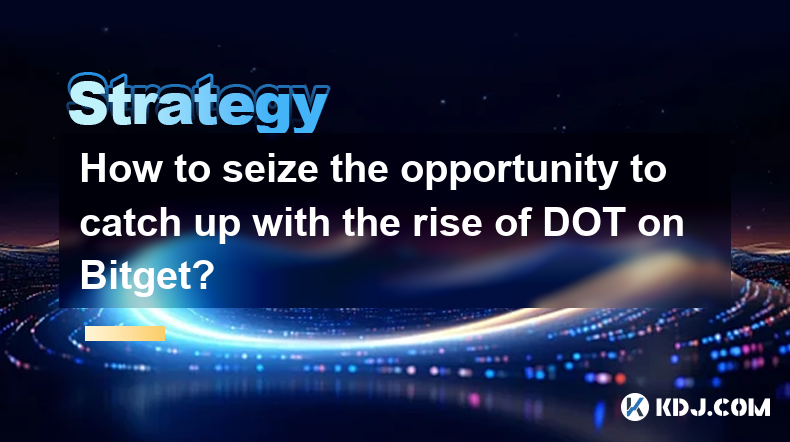
How to seize the opportunity to catch up with the rise of DOT on Bitget?
Mar 31,2025 at 07:29pm
Understanding the DOT/Bitget OpportunityPolkaDot (DOT) is a prominent cryptocurrency known for its innovative cross-chain interoperability solutions. Bitget is a well-established cryptocurrency exchange offering a variety of trading options, including DOT trading pairs. Seizing opportunities within this pairing requires understanding market dynamics, r...
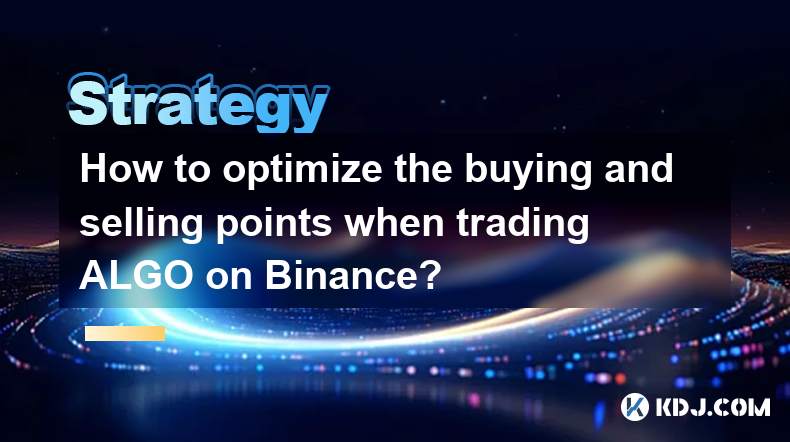
How to optimize the buying and selling points when trading ALGO on Binance?
Mar 31,2025 at 12:28am
Understanding ALGO Price Volatility on BinanceAlgorand (ALGO) price, like most cryptocurrencies, is highly volatile. Successful trading requires understanding these fluctuations and identifying optimal entry and exit points. This involves analyzing market trends, using technical indicators, and managing risk effectively. Ignoring these factors can lead...
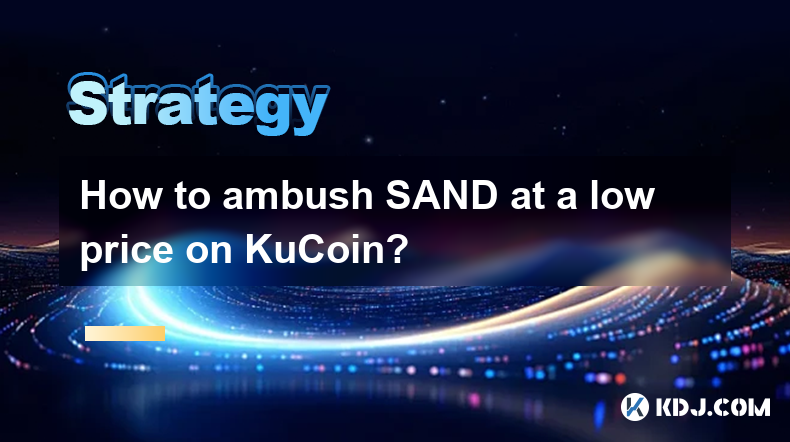
How to ambush SAND at a low price on KuCoin?
Apr 02,2025 at 06:22am
Understanding the SAND Price VolatilityThe Sandbox (SAND) token, like most cryptocurrencies, experiences price fluctuations. These fluctuations are influenced by various factors, including market sentiment, technological developments within the Sandbox metaverse, broader cryptocurrency market trends, and news impacting the overall blockchain space. Suc...
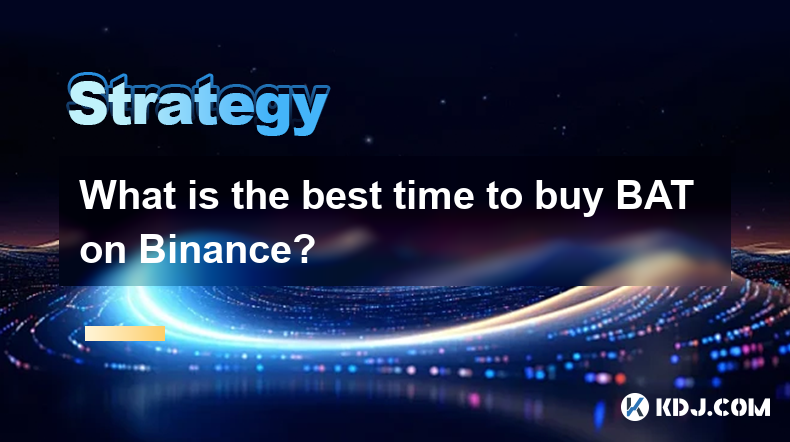
What is the best time to buy BAT on Binance?
Apr 01,2025 at 02:07am
There's no single 'best' time to buy Basic Attention Token (BAT) on Binance, or any cryptocurrency for that matter. The cryptocurrency market is incredibly volatile, influenced by a multitude of factors, making precise prediction impossible. Timing the market perfectly is a fool's errand. Instead, focus on a long-term strategy and consider your persona...
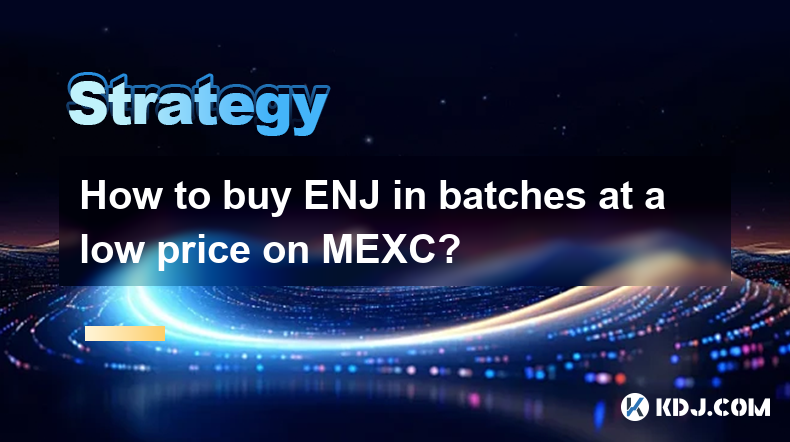
How to buy ENJ in batches at a low price on MEXC?
Mar 30,2025 at 10:28am
Understanding Batch Buying and Price FluctuationsBuying ENJ (Enjin Coin) in batches on MEXC, or any exchange, aims to mitigate the risk of buying high. Cryptocurrency prices are incredibly volatile. Purchasing a large amount at once exposes you to significant losses if the price drops immediately after your purchase. Batch buying spreads out your inves...
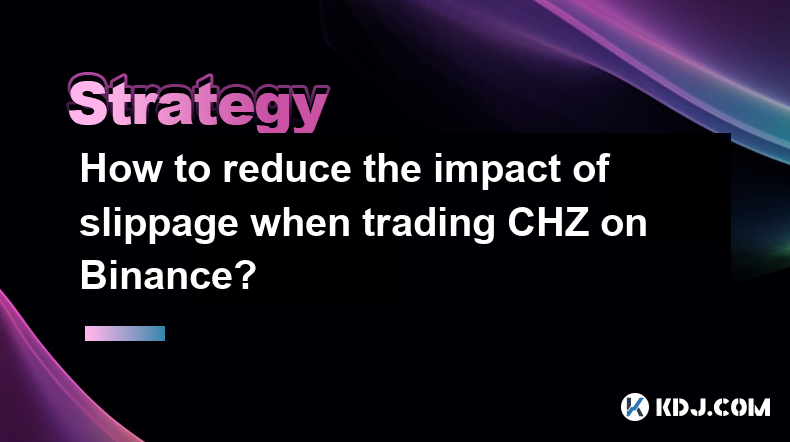
How to reduce the impact of slippage when trading CHZ on Binance?
Apr 01,2025 at 08:00pm
Understanding Slippage in CHZ TradingSlippage refers to the difference between the expected price of a trade and the actual execution price. In the volatile cryptocurrency market, especially with tokens like CHZ (Chiliz), slippage can significantly impact your profits. Several factors contribute to slippage, and understanding them is crucial to mitigat...

How to seize the opportunity to catch up with the rise of DOT on Bitget?
Mar 31,2025 at 07:29pm
Understanding the DOT/Bitget OpportunityPolkaDot (DOT) is a prominent cryptocurrency known for its innovative cross-chain interoperability solutions. Bitget is a well-established cryptocurrency exchange offering a variety of trading options, including DOT trading pairs. Seizing opportunities within this pairing requires understanding market dynamics, r...

How to optimize the buying and selling points when trading ALGO on Binance?
Mar 31,2025 at 12:28am
Understanding ALGO Price Volatility on BinanceAlgorand (ALGO) price, like most cryptocurrencies, is highly volatile. Successful trading requires understanding these fluctuations and identifying optimal entry and exit points. This involves analyzing market trends, using technical indicators, and managing risk effectively. Ignoring these factors can lead...

How to ambush SAND at a low price on KuCoin?
Apr 02,2025 at 06:22am
Understanding the SAND Price VolatilityThe Sandbox (SAND) token, like most cryptocurrencies, experiences price fluctuations. These fluctuations are influenced by various factors, including market sentiment, technological developments within the Sandbox metaverse, broader cryptocurrency market trends, and news impacting the overall blockchain space. Suc...

What is the best time to buy BAT on Binance?
Apr 01,2025 at 02:07am
There's no single 'best' time to buy Basic Attention Token (BAT) on Binance, or any cryptocurrency for that matter. The cryptocurrency market is incredibly volatile, influenced by a multitude of factors, making precise prediction impossible. Timing the market perfectly is a fool's errand. Instead, focus on a long-term strategy and consider your persona...

How to buy ENJ in batches at a low price on MEXC?
Mar 30,2025 at 10:28am
Understanding Batch Buying and Price FluctuationsBuying ENJ (Enjin Coin) in batches on MEXC, or any exchange, aims to mitigate the risk of buying high. Cryptocurrency prices are incredibly volatile. Purchasing a large amount at once exposes you to significant losses if the price drops immediately after your purchase. Batch buying spreads out your inves...

How to reduce the impact of slippage when trading CHZ on Binance?
Apr 01,2025 at 08:00pm
Understanding Slippage in CHZ TradingSlippage refers to the difference between the expected price of a trade and the actual execution price. In the volatile cryptocurrency market, especially with tokens like CHZ (Chiliz), slippage can significantly impact your profits. Several factors contribute to slippage, and understanding them is crucial to mitigat...
See all articles

























































































